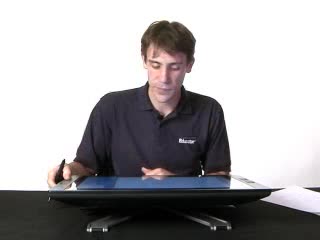
This is a quick preview of the lesson. For full access, please Log In or Sign up.
For more information, please see full course syllabus of High School Physics
For more information, please see full course syllabus of High School Physics
High School Physics One Dimensional Kinematics
Lecture Description
The most basic level of this section of physics, mechanics, is known as kinematics; essentially this is just the physics behind calculations of speed and distance travelled. Here we introduce a lot of terminology used ad nauseam in mechanics, as well as give you some formulae used in mechanics. It’s important to note that, although mathematically things like velocity and speed will be the same number, velocity will give you both the speed and direction while speed will only give you half of the answer, the speed. Once you’re comfortable with the math and concepts of vectors and scalars, we can move on to the same topic but in multiple dimensions.
Bookmark & Share
Embed
Share this knowledge with your friends!
Copy & Paste this embed code into your website’s HTML
Please ensure that your website editor is in text mode when you paste the code.(In Wordpress, the mode button is on the top right corner.)
×
- - Allow users to view the embedded video in full-size.
Next Lecture
Previous Lecture
















































0 answers
Post by Jia Cheng Ma on February 19, 2023
Thx
0 answers
Post by Ryan Hou on July 6, 2022
Mr. Selhorst-Jones, for exercise 4, I got 6000 as the final distance (df), but shouldn't the velocity final be 550, because v = displacement/time, and displacement = 6000 - 500 = 5500 (m), and time = 10 s, so v final should be 5500m/10s = 550m/s?
1 answer
Mon May 15, 2017 11:34 PM
Post by Thomas Lyles on May 5, 2017
Ex. 1
You write g=9.8 m/s
**this is incorrect. As, you state earlier, g=9.8m/s^2
Please take more care with the details. These sort of small discrepancies sow confusion.
1 answer
Sun Jun 15, 2014 4:20 PM
Post by Mitrica Dragos on June 15, 2014
The displacement formula can be proved by taking a time interval t-t0 and divide it into k intervals Δt. t-t0=N*Δt. We look at every second.
at t=t0 we have v1=v0
at t=t0+Δt we have v2=v0+aΔt
...
at t=t0+kΔt we have vk=v0+k*aΔt
The speed increases in an arithmetic progression, so the average speed is going to be the arithmetic mean of all speeds.
vm=((k+1)*v0+Δt*a(1+2+3+...+k))/(k+1)=((k+1)*v0+a*Δt*k*(k+1)/2)/(k+1)=(v0+k*a*Δt/2)=v0+1/2*a*Δt
The average speed is vm=Δd/Δt
so (v0+1/2*a*Δt)Δt=Δd
d=d0+v0*Δt+1/2*a*(Δt^2)
3 answers
Sat Nov 9, 2013 3:52 PM
Post by Abdi Khalif on November 4, 2013
For the kinematics Formula #2 part how come you took the [d(t)=1/2 at^2 + v_i t + d_i] formula and started plugin in other formulas into it?
3 answers
Tue Aug 13, 2013 10:08 AM
Post by Lavanya Kanneganti on August 12, 2013
Okay, so i understand how you use the formulas to solve the problems and how the math works, i just don't think that i would be able to solve the problem myself if it was in front of me.
I don't think i could be able to approach the problem and decide which formula to use to solve the problem and consider all of the factors that effect the object.
1 answer
Mon Aug 12, 2013 2:33 PM
Post by Lavanya Kanneganti on August 12, 2013
I've always been told that gravity is equal to 9.8 m/s^2, never negative.
Is this also acceptable?
1 answer
Mon Jun 3, 2013 8:17 PM
Post by Melinda Hernandez on June 3, 2013
Why are the lecture slides not coming up?
1 answer
Wed May 1, 2013 2:25 PM
Post by Christopher Barnes on April 30, 2013
Can't you also derive these equations by looking at the area under the velocity curve which I believe equals the change in displacement? It's a great way to show where the equation comes from without using calculus.
2 answers
Last reply by: Ryan Hou
Wed Jul 6, 2022 10:27 AM
Post by Lauren Long on January 8, 2013
When I first learned this concept my teacher taught my class the big four. I was wondering how could I apply these formulas to your example number two? One of these formulas is a derivative of the dt=1/2at^2+vit+di
Δx= 1/2(vi+ vf)Δt
vf= vi+ aΔt
Δx= vi(Δt)+1/2a(Δt)^2
vf^2= vi^2+2ax
1 answer
Wed Dec 26, 2012 8:35 PM
Post by Ali Hashemi on December 19, 2012
The formulas need to be explained in much more detail, I do not need to know how they are derived using calculus but I do need to know which formula to use in certain scenarios. This would be understandable for someone who has already taken physics yet for someone learning this material for the first time, the use of each formula need to be explained in greater detail. A slower pace and better detail about why the specific formula is being used would be very helpful.
1 answer
Sat Oct 6, 2012 5:40 PM
Post by Mohamed Aden on October 5, 2012
I am not totally satisfied with the way you explained the Formulas, it seemed you were rushing through it, it sounded a kind of like a review...
3 answers
Wed Dec 26, 2012 8:20 PM
Post by Kristine Penalosa on September 16, 2012
why is the unit for gravity m/s^s now, when in the previous equations it was just m/s?